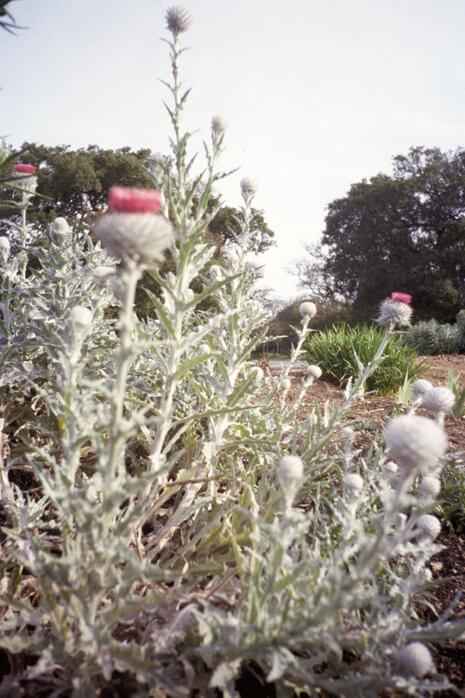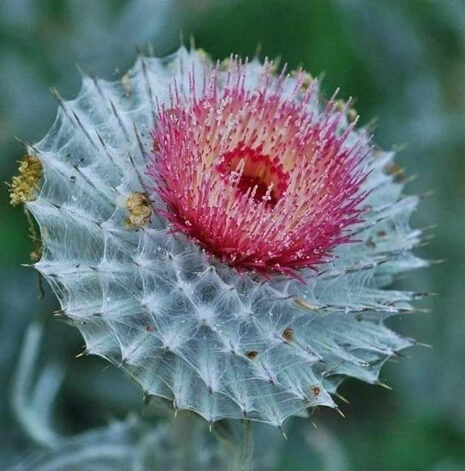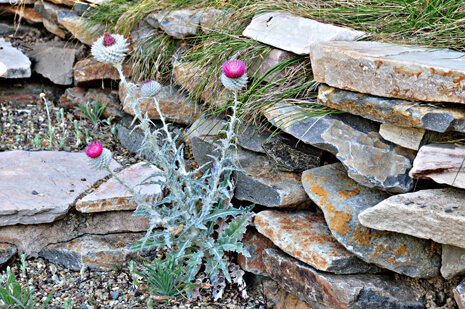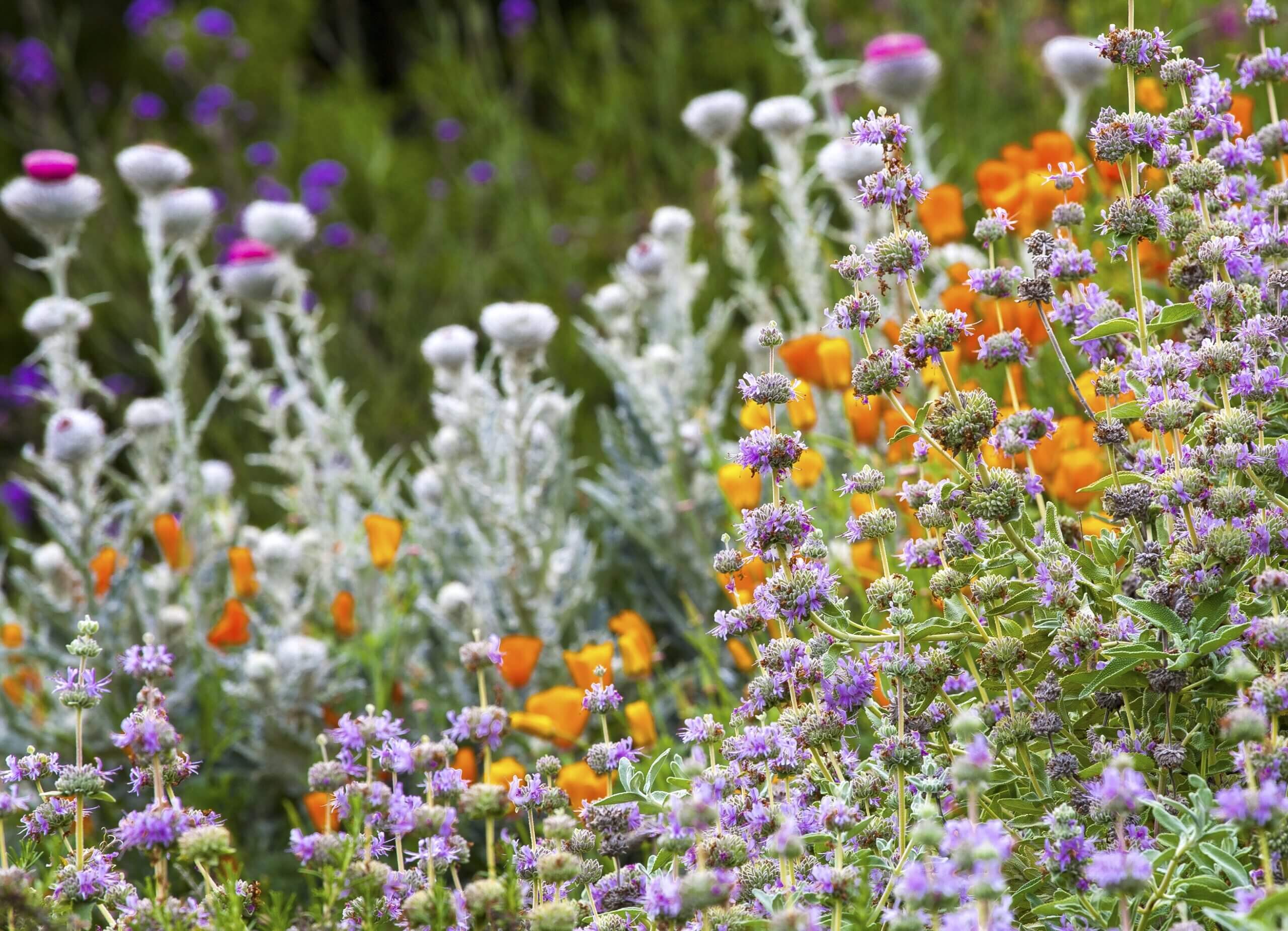Other Larval Host Plants
Painted lady larva will also feed on weedy thistles in the Cirsium and Silybum genera, as well as the dreaded Yellow Star Thistle (Centaurea solstitialis), and related cultivated plants like Artichoke and Cardoon. The larvae also feed on other members of the Aster/Sunflower family such as yarrows and sunflowers.
They sometimes feed on Mallow family plants, especially the weedy ones, like Cheeseweed (Malva nicaensis); but also Hollyhocks, cultivated Malva spp., and both native and non-native Sidalceas. A particularly good Sidalcea for the garden is a vigorous hybrid called ‘Party Girl’; I have found larvae of five different butterfly species using this plant!
Larvae will also feed on Borage family plants such as Fiddleneck, Comfrey, and the cultivated herb, Borage. The larvae can sometimes be found on a Verbena family plant, commonly called Fogfruit, (Phyla or Lippia nodiflora), as well plants in the pea family, nettle family and plantain family.
Native Host Plants

Cobweb Thistle, photo by CT

Cobweb Thistle flower
I grow Cobweb Thistle (Cirsium occidentale), a California native thistle, and a very beautiful plant, to provide for this butterfly and others. It’s not an easy plant to grow in a container or in the garden; and it is never invasive! It does occasionally reseed in my garden, and sometimes shows up in odd places, but I always find a way to accommodate this plant. In my oak woodland garden, seedlings often show up in part-shade situations. Cobweb Thistle is reputed to be a biennial, but sometimes it behaves like an annual, and it’s hard to keep the seedlings growing in any type of nursery container, but I keep trying!

Thistle in the pathway
Other native Asteraceae family plants that provide for the larvae of the Painted lady are Pearly Everlasting (Anaphalis margaritaceae) and Mule Ears (Wytheia spp.). Native Borage family plants that larvae will feed on are Popcorn Flower (Plagiobothyrs spp.) and Hound’s Tongue (Cynoglossum grande). Native Mallow family plants that support larvae are Checkerbloom (Sidalcea malvaeflora), and possibly Mission Mallow (Lavatera or Malva assurgentiflora).


